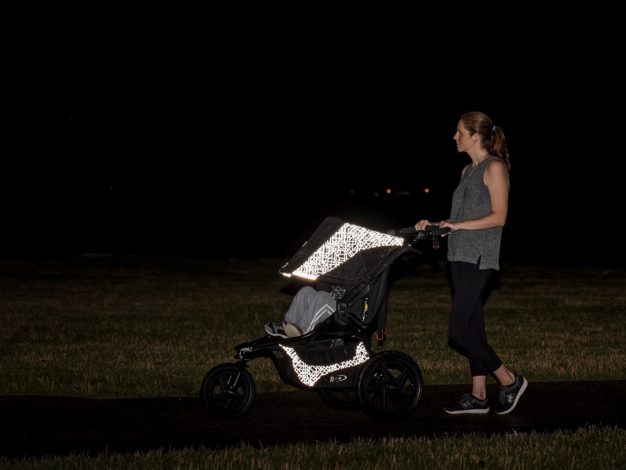Staying Safe When Hiking at Night
- Blog Staying Safe When Hiking at Night
After the sun makes its daily descent below the horizon, delivering a quiet blanket of darkness with a soft moonlit glow, it is perhaps the most magical time to head outdoors. Think about it: while hiking at night, you gaze up at the milky way, rely on your senses and get in sync with the surrounding natural environment and navigate by light of the moon. It’s really a transformative experience. For you and your children. But, what about safety?
Sure, you’re probably thinking of all the dangers of hiking at night: limited vision, encounters with nocturnal creatures, losing your way. We can assure you, however, with a little prep work and the right gear, there’s no reason you can’t have an after-dark adventure with your kiddos.

What to Bring
Just be sure to pack all of the things. You know ... the snacks. The bug spray. The layers. The snacks. The change of clothes. The carrier. The snacks. And, we couldn’t recommend the BOB Lunar Stroller enough. The BOB Lunar stroller has ultra reflective fabric keeping you and your child safe and visible during morning jogs or, in this case, evening strolls. With its swiveling-locking front wheels, this stroller can maneuver tight turns with finesse and it can lock forward for increased stability when jogging or on rough terrain. It’s a game changer.
Lighting for Hiking at Night
Okay, so you’ve never been on a night hike before? You might be thinking bright headlamps or industrial flashlights. Stop right there. While bright lights are appropriate for some outings where maximum illumination is essential, like trail running or in emergency situations, that harsh white light can actually wreak havoc on your night vision. Your eyes will naturally adapt to the darkness, amplifying your nighttime vision, and give you a better opportunity to really take in the natural landscape, wildlife and starry skies above.- Bring a headlamp or flashlight and extra batteries. But try not to use them unless you really need to. And, if you can find a flashlight with a red-light setting (in addition to the standard white-light setting), that’s even better as your eyes are less sensitive and, therefore, your night vision won’t be as affected by the use of a flashlight.
- Once you’re outside, allow your eyes some time to adjust to the light before heading out on the trail. It can sometimes take up to 45 minutes for your eyes to properly adjust.
- Do not look directly into any light source as it resets your night vision and you’ll have to start all over. This also means that while you’re out on the trail, if you run into anyone using a flashlight, try your best to look away.
Do’s and Don’ts for Hiking at Night
- DO hike on a familiar trail. It’s always a good idea to begin on a trail you’ve hiked a few times during the daytime.
- DO go slow and steady. Even on familiar trails, darkness can make terrain a bit tricky. Rocks and roots can come out of nowhere so slow your pace and take in all of that moonlit scenery.
- Do NOT hike alone. Your mind can be your worst enemy, especially when you’re alone in the dark. Every snap of a branch, sound of critters scampering across fallen leaves and shadow may scare you. Go with friends.
- DO bring a cellphone for emergencies. But understand that you don’t always get service everywhere.
- DO NOT head too far off the trail. It’s easy to get turned around in the dark, even in familiar places. Try not to head too far off the trail. But if you do, make sure to remember how to get back on track by noting familiar rocks or trail markers along the way.
- DO bring layers. When the sun goes down, be ready for cooler temps and bring along an extra layer for you and the kiddos.
- DO tell someone where you’re going. This applies to day hikes too. Make sure you tell someone exactly where you’re going and what time you expect to be back.
Read More
What would you add? Share some of your nighttime hiking tips in the comments below to help others get started.Related Content




Comments